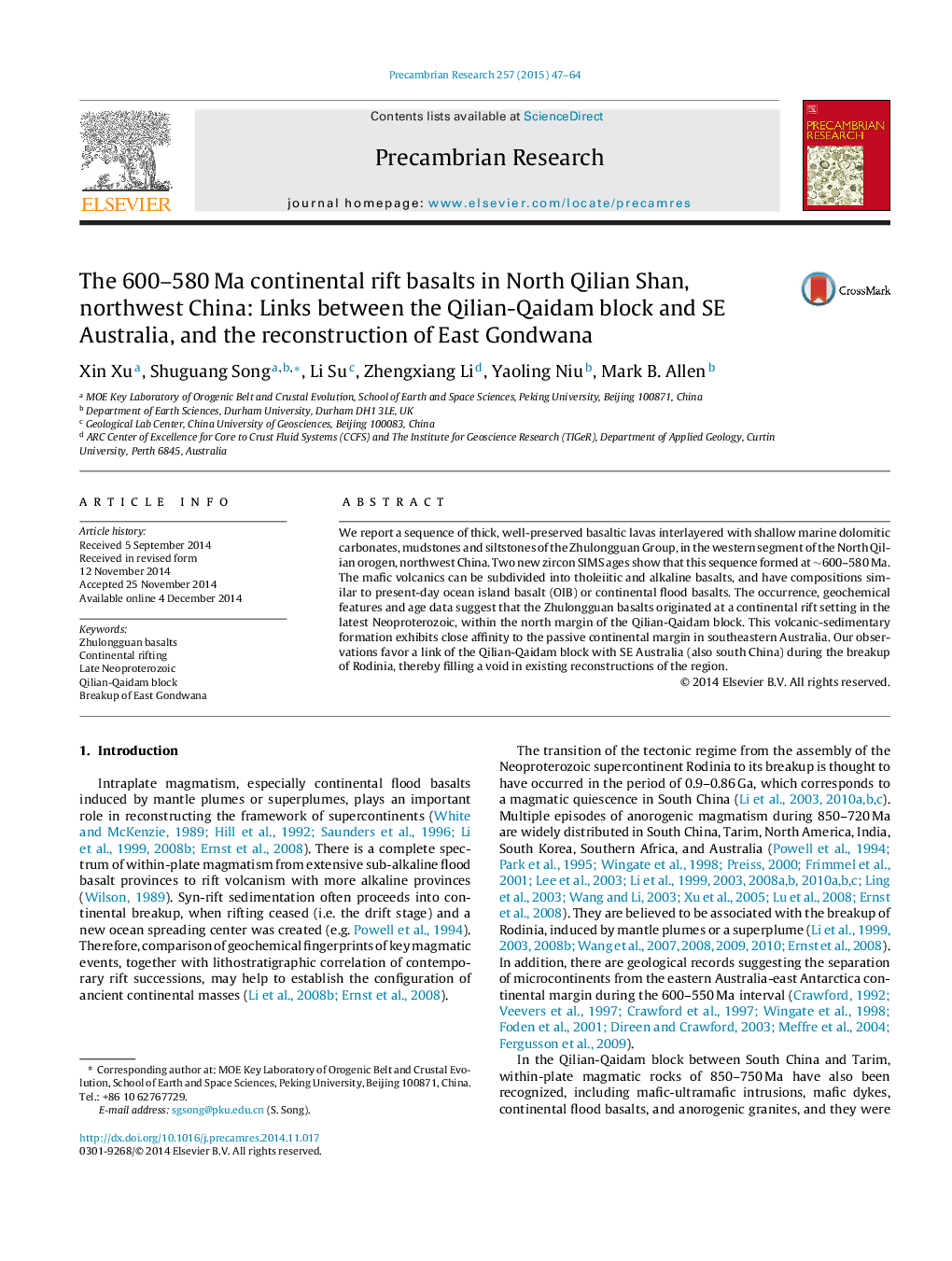| Article ID | Journal | Published Year | Pages | File Type |
|---|---|---|---|---|
| 4722851 | Precambrian Research | 2015 | 18 Pages |
•We report 600–583 Ma volcanic-sedimentary sequence in the northwest China.•They have compositions similar to present-day OIB/E-MORB or continental flood basalts.•They originated at a continental rifting setting.•They play roles in reconstruction of East Gondwana the late Neoproterozoic.
We report a sequence of thick, well-preserved basaltic lavas interlayered with shallow marine dolomitic carbonates, mudstones and siltstones of the Zhulongguan Group, in the western segment of the North Qilian orogen, northwest China. Two new zircon SIMS ages show that this sequence formed at ∼600–580 Ma. The mafic volcanics can be subdivided into tholeiitic and alkaline basalts, and have compositions similar to present-day ocean island basalt (OIB) or continental flood basalts. The occurrence, geochemical features and age data suggest that the Zhulongguan basalts originated at a continental rift setting in the latest Neoproterozoic, within the north margin of the Qilian-Qaidam block. This volcanic-sedimentary formation exhibits close affinity to the passive continental margin in southeastern Australia. Our observations favor a link of the Qilian-Qaidam block with SE Australia (also south China) during the breakup of Rodinia, thereby filling a void in existing reconstructions of the region.
